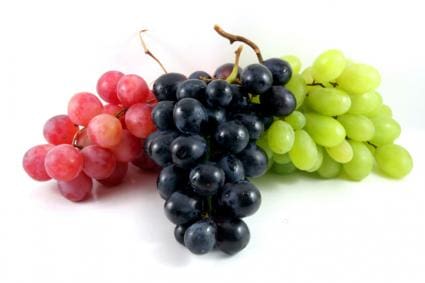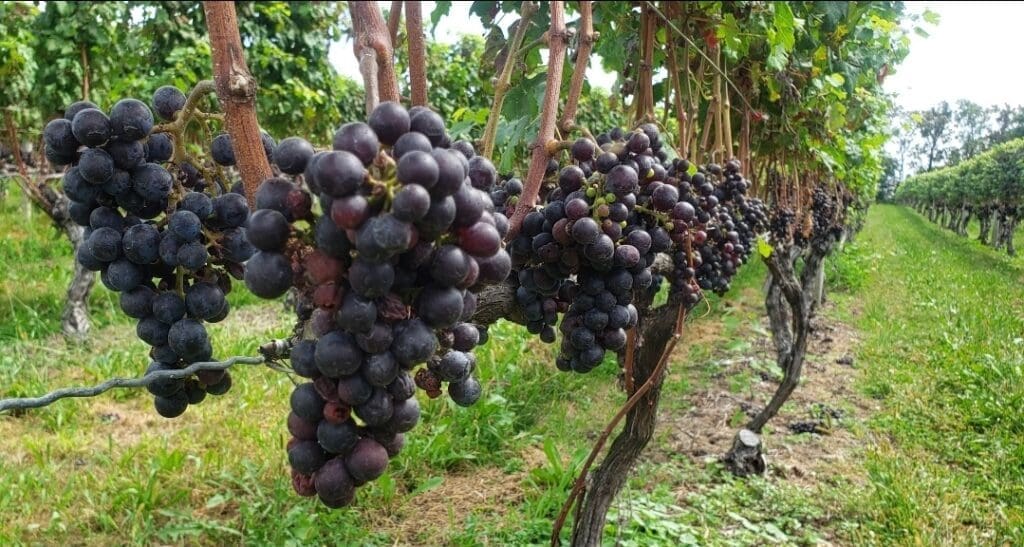How to Grow Long Island Grapes in Your Backyard
You don’t need to live on a winery to grow Long Island grapes for making jams and wine. Or maybe you just want to pop them in your mouth for a snack! Learn how to plant and harvest juicy grapes in your own garden by following these instructions.

Discover how to grow grapes, and you’ll enjoy the amazing pleasure of picking a grape fresh off the vine and popping it into your mouth. When you bite into a grape that’s warm from the sun and bursting with juice, you’ll be hooked on growing grapes on your own.
When we think of growing grapes, we dream of green or purple table grapes (the kind you eat fresh), jams and jellies, raisins, or perhaps a good wine grape, just in case you want to make your own Cabernet.
Knowing how to grow grapes successfully means selecting the right variety for your region. Grapes will grow in almost any part of the country but you need to choose one that suits your local conditions of summer heat and winter cold. Your local extension office can suggest a specific variety, whether it be table or wine.
Grapes need full sun all day no matter the region you live in, and well-drained soil that’s free of weeds and grass—you don’t want any competition for water and nutrients. Think of all those pictures you’ve seen of the Long Island vineyards—that’s what you’re aiming for.
Planting Long Island Grapes

Plant grapes in early spring, when you’ll find bare-root varieties available. As you plant, cut the existing root back to 6 inches; this will encourage feeder roots to grow near the trunk. The root system of a grapevine can grow deep, so well-cultivated soil is best. You will probably need to do some pruning at planting time, too. Prune off all except for one stem, and then look for the buds on the stem; cut the stem back to only two buds. You’re on your way.
Fertilizing Long Island Grapes

The first two or three years, each early spring, apply a nitrogen fertilizer. You may not have to do this as the vines mature; it all depends on your observation. Do the vines look vigorous and healthy? Maybe you don’t need any fertilizer.
Pruning Long Island Grapes

Learn how to grow grapes trained on a vertical trellis or on an overhead arbor. You can decide which method fits into your garden better, but be sure to have the supports in place before you plant the vines. On a vertical trellis, branches from the previous year’s growth are selected to grow along the wires of the trellis or fence. The buds along the stems will flower and set fruit. Just like a fence, the trellis can have two or three levels, and the center stem is left to grow up to the next level.
If you’d like to see your grapes hanging down from overhead, you can train the vines that way, still shortening the branches and selecting just a few to secure to the metal or wood arbor.
The technique for how to grow the most productive grapes is good pruning practices. Pruning grapes and the training techniques may sound complicated, but they don’t need to be. Each dormant season, keep a few stems that grew last year, and train them on the wires or trellis. You’ll probably have to shorten them to fit your space. Prune everything else off. It’s shocking to see how much you will cut off, but your grapes will grow better because of it. You’ll see buds on the remaining growth; each of those buds will produce several shoots that grow leaves and flowers.
Vines can overproduce grapes. This isn’t a case of too much of a good thing, because overproduction leads to poor-quality fruit. Avoid this by thinning flower clusters that look misshapen and cutting off fruit clusters that develop poorly.
Don’t jump the gun on harvesting; grapes won’t improve in taste after you pick, so sample a grape or two occasionally until they are ripe. Then get busy picking!


